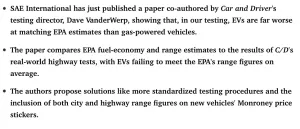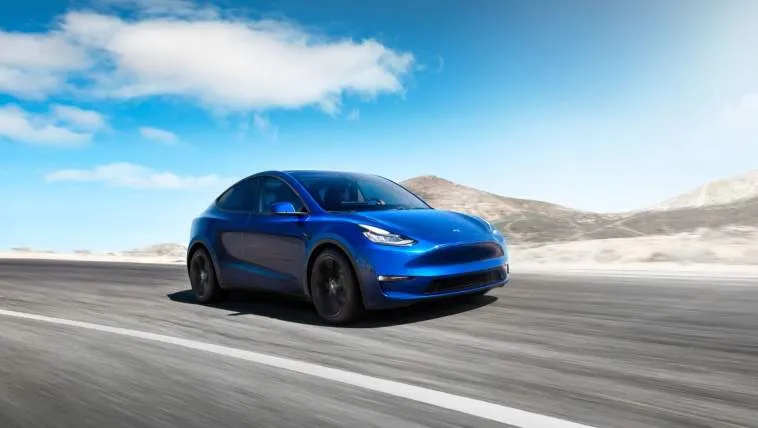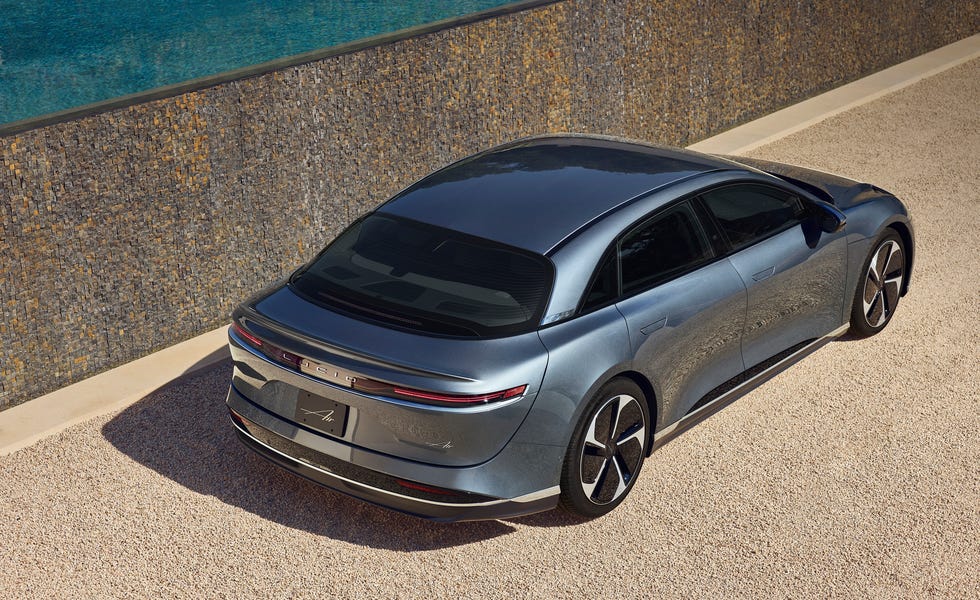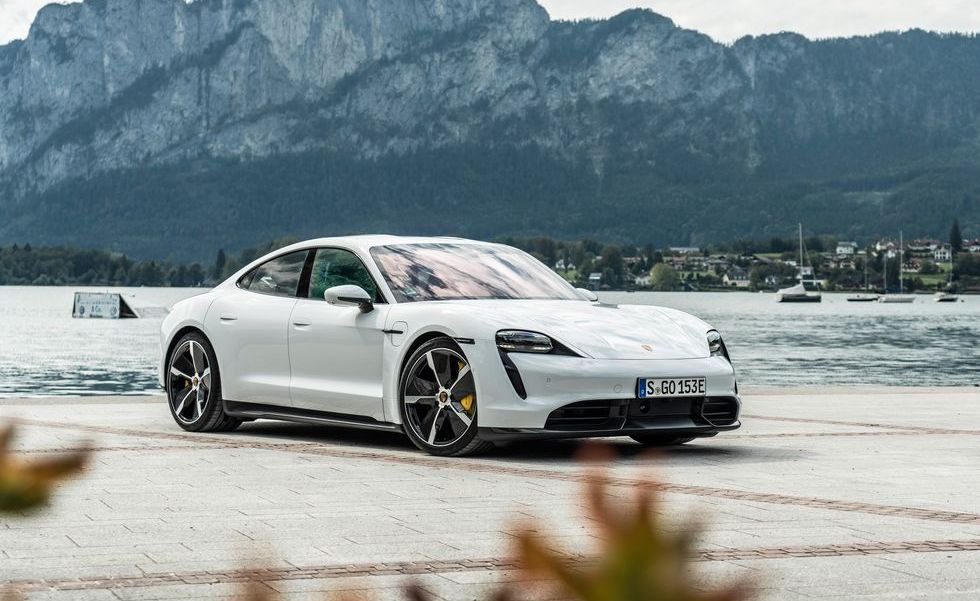
(Car and Driver) A new paper published by SAE International uses Car and Driver‘s real-world highway test data to show that electric vehicles underperform on real-world efficiency and range relative to the EPA figures by a much greater margin than internal-combustion vehicles. While the latter typically meet or exceed the EPA-estimated highway fuel economy numbers, EVs tend to fall considerably short of the range number on the window sticker. The paper, written by Car and Driver’s testing director, Dave VanderWerp, and Gregory Pannone, was presented this week at SAE International’s annual WCX conference. It points to a need for revised testing and labeling standards for EVs moving forward.
“Basically we’ve taken a look at how vehicles perform relative to the values on the window sticker, looking at the difference between what the label says and what we actually see in our real-world highway test,” explained VanderWerp. “We see a big difference in that gap between gas-powered vehicles and the performance of EVs. The real question is: When first-time customers are buying EVs, are they going to be pleasantly surprised or disappointed by the range?”
On Car and Driver‘s 75-mph highway test, more than 350 internal-combustion vehicles averaged 4.0 percent better fuel economy than what was stated on their labels. But the average range for an EV was 12.5 percent worse than the price sticker numbers.
One reason the paper suggests for why EVs fail to match expectations is how the range is calculated. While separate city and highway range figures are computed behind closed doors, only a combined number is presented to consumers. The combined rating is weighted 55 percent in favor of the city figure, where EVs typically perform better. This inflates the range estimates, making it harder to match in real-world highway driving. The paper proposes publishing both city and highway range figures—as with fuel-economy estimates for gas-powered vehicles—to give shoppers a more holistic sense of a vehicle’s abilities.
The way the tests are conducted also skews the reported range figure. Unlike Car and Driver‘s real-world test—carried out at a constant 75 mph—the EPA’s cycle is variable, with the speed increasing and decreasing over the course of the test. While this is detrimental to the results for gas vehicles, which tend to be most efficient at a steady rpm, the ability to regenerate energy under braking leads to higher range results for EVs, which are shifted even higher by the slight bias towards the city results in the combined rating.
The EPA’s highway cycle is conducted at significantly lower speeds than Car and Driver‘s 75-mph test, with the initial EPA results then multiplied by a reduction factor to simulate the effect of higher speeds. Automakers can chose between running a two-cycle test—where the data is multiplied by a standard 0.7 adjustment factor—or carrying out a five-cycle test in an attempt to earn a smaller reduction factor, making the label figure higher. That means range figures aren’t perfectly comparable across different vehicles.





 PORSCHE
PORSCHE

